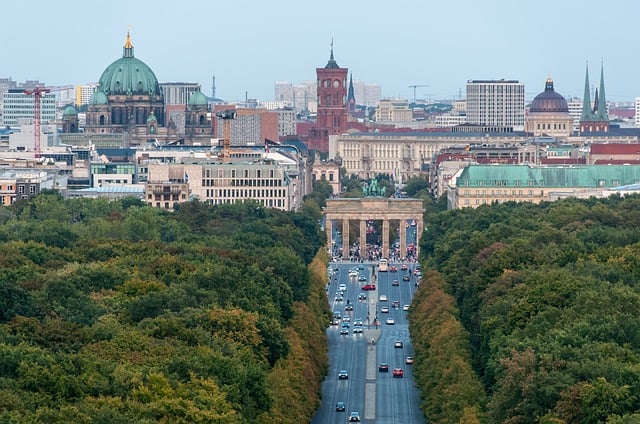Historic Cities: Edinburgh, Manchester, and Bath

The United Kingdom is home to some of the world’s most historic and culturally rich cities. Among them, Edinburgh, Manchester, and Bath stand out for their unique histories, architectural marvels, and vibrant cultural scenes. Each city offers a distinct glimpse into the past while thriving as modern hubs of art, education, and innovation. This article explores the historical significance, key attractions, and cultural contributions of these three iconic cities, providing a comprehensive guide for history enthusiasts and travelers alike.
Edinburgh: The Athens of the North
Edinburgh, the capital of Scotland, is a city steeped in history and legend. Known as the “Athens of the North” for its intellectual and cultural heritage, Edinburgh is a UNESCO World Heritage Site that seamlessly blends medieval charm with Georgian elegance.
Historical Significance
- Medieval Roots: Edinburgh’s history dates back to the 12th century when it became a royal burgh under King David I. The city’s Old Town, with its narrow cobblestone streets and towering tenements, reflects its medieval origins.
- Scottish Enlightenment: In the 18th century, Edinburgh was at the heart of the Scottish Enlightenment, a period of intellectual and scientific achievements. Thinkers like David Hume and Adam Smith called the city home.
- Political Center: Edinburgh has long been a political hub, housing the Scottish Parliament and serving as the seat of Scottish royalty at the Palace of Holyroodhouse.
Key Attractions
- Edinburgh Castle: Perched atop Castle Rock, this iconic fortress offers stunning views of the city and houses the Crown Jewels of Scotland.
- Royal Mile: A historic thoroughfare connecting Edinburgh Castle to the Palace of Holyroodhouse, the Royal Mile is lined with shops, pubs, and landmarks.
- Arthur’s Seat: An extinct volcano and hiking spot, Arthur’s Seat provides panoramic views of the city and is steeped in Arthurian legend.
- National Museum of Scotland: This museum showcases Scotland’s history, culture, and innovations, from ancient artifacts to modern technology.
Cultural Contributions
- Edinburgh Festival Fringe: The world’s largest arts festival, the Fringe transforms the city every August with performances ranging from theater to comedy.
- Literature: Edinburgh is a UNESCO City of Literature, home to authors like Sir Walter Scott and J.K. Rowling, who wrote much of the Harry Potter series in the city.
Manchester: The Industrial Powerhouse
Manchester, located in northwest England, is a city with a rich industrial heritage and a vibrant cultural scene. Known as the birthplace of the Industrial Revolution, Manchester has reinvented itself as a modern metropolis while preserving its historic roots.
Historical Significance
- Industrial Revolution: Manchester played a pivotal role in the Industrial Revolution, becoming a global center for textile manufacturing and trade. The city’s cotton mills and warehouses were at the forefront of technological innovation.
- Labor Movement: Manchester was a hotbed of political and social change, with the Chartist movement and the fight for workers’ rights gaining momentum in the 19th century.
- Cultural Diversity: As a major port city, Manchester has long been a melting pot of cultures, contributing to its dynamic and inclusive identity.
Key Attractions
- Museum of Science and Industry (MOSI): This museum celebrates Manchester’s industrial heritage, with exhibits on textiles, transportation, and engineering.
- Manchester Cathedral: A stunning example of Gothic architecture, the cathedral dates back to the 15th century and is a testament to the city’s medieval past.
- Castlefield Urban Heritage Park: This area features Roman ruins, restored warehouses, and canals, offering a glimpse into Manchester’s industrial history.
- John Rylands Library: A neo-Gothic masterpiece, this library houses rare books and manuscripts, including early printed works.
Cultural Contributions
- Music: Manchester is renowned for its music scene, having produced iconic bands like The Smiths, Joy Division, and Oasis. The city’s venues, such as the Manchester Arena and Albert Hall, continue to host world-class performances.
- Football: Home to two of the world’s most famous football clubs, Manchester United and Manchester City, the city is a global hub for sports enthusiasts.
Bath: A Georgian Jewel
Bath, located in southwest England, is a city famed for its Roman-built baths and Georgian architecture. A UNESCO World Heritage Site, Bath is a living museum of history and elegance.
Historical Significance
- Roman Origins: Bath was founded by the Romans in the 1st century AD as a spa town, thanks to its natural hot springs. The Roman Baths are among the best-preserved ancient sites in the UK.
- Georgian Era: In the 18th century, Bath became a fashionable resort town for the British elite. The city’s Georgian architecture, including the Royal Crescent and the Circus, reflects this period of prosperity.
- Literary Connections: Bath has inspired numerous writers, including Jane Austen, who lived in the city and set two of her novels, Northanger Abbey and Persuasion, there.
Key Attractions
- Roman Baths: This ancient complex includes the Great Bath, a temple, and a museum showcasing artifacts from Roman Britain.
- Bath Abbey: A magnificent example of Perpendicular Gothic architecture, the abbey features stunning stained glass windows and a tower with panoramic views.
- The Royal Crescent: A row of 30 terraced houses arranged in a crescent shape, this iconic landmark is a masterpiece of Georgian design.
- Pulteney Bridge: One of the few bridges in the world with shops built into it, Pulteney Bridge is a picturesque spot overlooking the River Avon.
Cultural Contributions
- Jane Austen Centre: This museum celebrates the life and works of Jane Austen, offering insights into her time in Bath and her literary legacy.
- Thermae Bath Spa: A modern spa that allows visitors to experience the city’s thermal waters, just as the Romans did centuries ago.
Comparing the Three Cities
While Edinburgh, Manchester, and Bath each have their unique histories and attractions, they share a common thread of resilience and reinvention. Here’s a quick comparison:
| City | Historical Era | Key Attractions | Cultural Contributions |
|---|---|---|---|
| Edinburgh | Medieval to Enlightenment | Edinburgh Castle, Royal Mile | Edinburgh Festival Fringe, Literature |
| Manchester | Industrial Revolution | Museum of Science and Industry | Music, Football |
| Bath | Roman to Georgian | Roman Baths, Royal Crescent | Jane Austen, Thermae Bath Spa |




